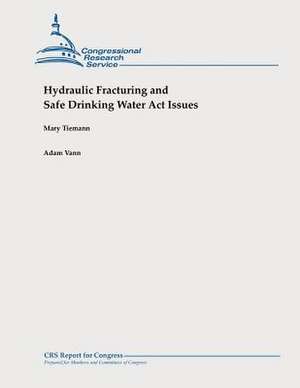Hydraulic Fracturing and Safe Drinking Water ACT Issues
Autor Mary Tiemann, Adam Vannen Limba Engleză Paperback
Preț: 88.49 lei
Nou
Puncte Express: 133
Preț estimativ în valută:
16.93€ • 18.47$ • 14.28£
16.93€ • 18.47$ • 14.28£
Carte disponibilă
Livrare economică 03-17 aprilie
Preluare comenzi: 021 569.72.76
Specificații
ISBN-13: 9781478326830
ISBN-10: 1478326832
Pagini: 42
Dimensiuni: 216 x 280 x 2 mm
Greutate: 0.12 kg
Editura: CREATESPACE
ISBN-10: 1478326832
Pagini: 42
Dimensiuni: 216 x 280 x 2 mm
Greutate: 0.12 kg
Editura: CREATESPACE
